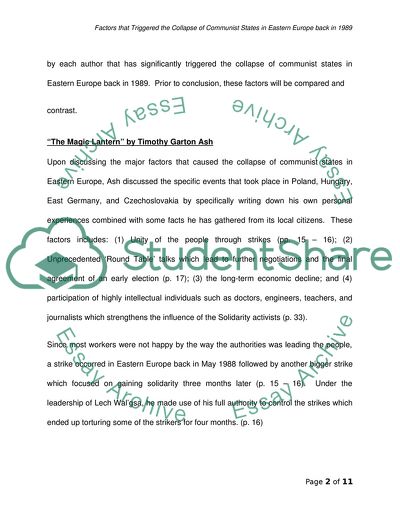Cite this document
(Factors that Triggered the Collapse of the Communist States in Eastern Case Study, n.d.)
Factors that Triggered the Collapse of the Communist States in Eastern Case Study. Retrieved from https://studentshare.org/history/1715306-why-did-the-communist-states-of-eastern-europe-collapse-in-1989
Factors that Triggered the Collapse of the Communist States in Eastern Case Study. Retrieved from https://studentshare.org/history/1715306-why-did-the-communist-states-of-eastern-europe-collapse-in-1989
(Factors That Triggered the Collapse of the Communist States in Eastern Case Study)
Factors That Triggered the Collapse of the Communist States in Eastern Case Study. https://studentshare.org/history/1715306-why-did-the-communist-states-of-eastern-europe-collapse-in-1989.
Factors That Triggered the Collapse of the Communist States in Eastern Case Study. https://studentshare.org/history/1715306-why-did-the-communist-states-of-eastern-europe-collapse-in-1989.
“Factors That Triggered the Collapse of the Communist States in Eastern Case Study”. https://studentshare.org/history/1715306-why-did-the-communist-states-of-eastern-europe-collapse-in-1989.


